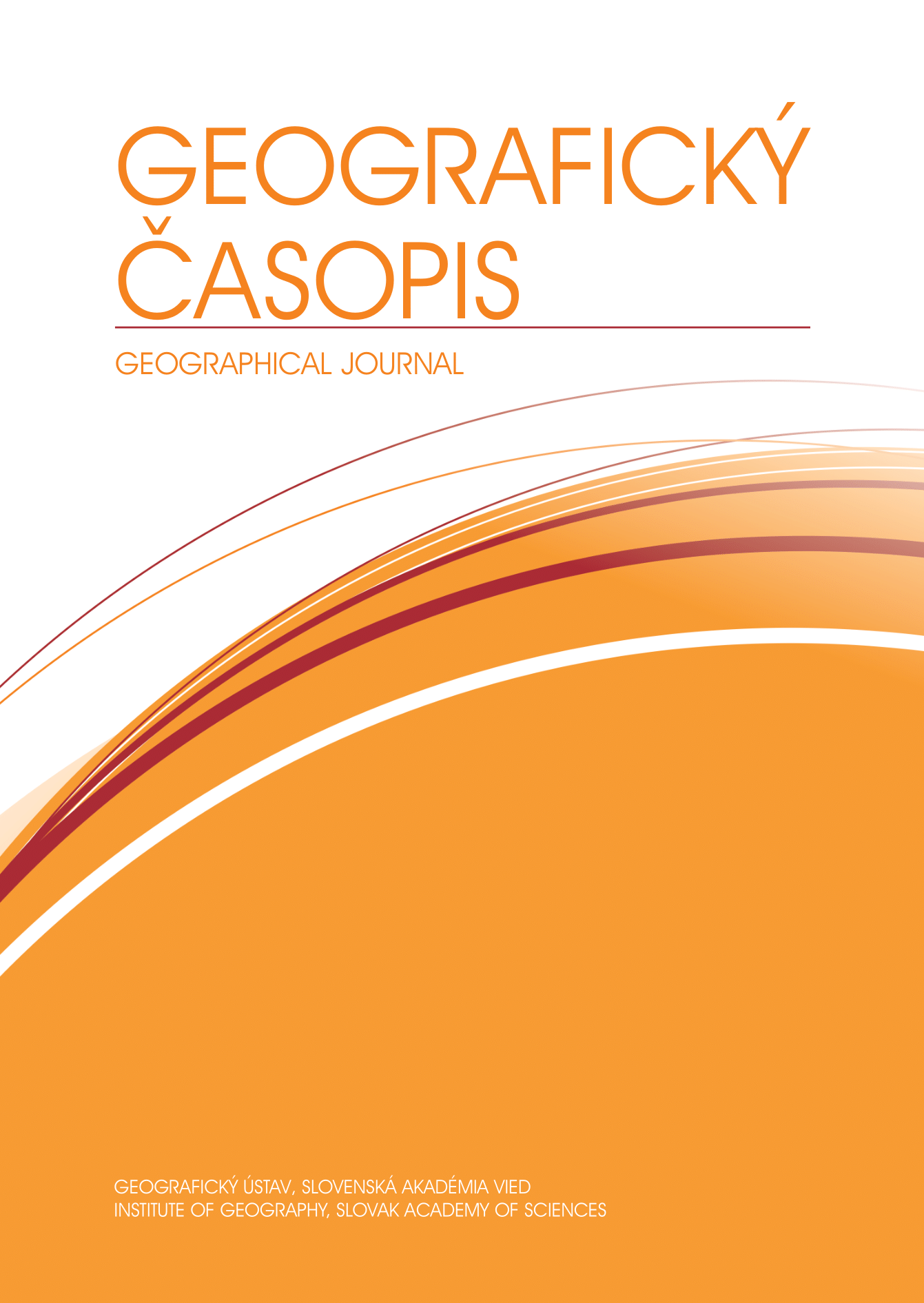Analysis of extreme precipitation trends and probability distributions across return periods in northwest Iran
DOI:
https://doi.org/10.31577/geogrcas.2025.77.1.04Keywords:
Probability distributions, Extreme precipitation events, Trend analysis, Climatic variability, Statistical distributionAbstract
Understanding the frequency and intensity of such events is crucial for infrastructure design, flood risk assessment, and water resource management, particularly in light of climate change. This study analyzes maximum daily precipitation trends and probability distributions across return periods in Ardabil Province, northwest Iran, aiming to identify suitable distributions for estimating extreme 24-hour precipitation, calculate maximum values for different return periods, and assess temporal trends in these events. Daily precipitation data from synoptic stations in Ardabil Province were analyzed using the CumFreq software for distribution fitting and the Mann-Kendall test to detect trends in the data. Various probability distributions were fitted to the data, with the "Dagum gen." and "Frechet" (Fisher-Tippet T2) distributions providing the best fits for several stations. Maximum daily precipitation values for return periods of 2, 5, 10, 25, 50, and 100 years were calculated, showing significant regional variability. Stations such as Nir and Parsabad exhibited much higher precipitation values compared to stations like Ardabil Airport and Namin, with notable differences in precipitation intensities across return periods. The Mann-Kendall trend test revealed mixed results, with some stations showing increasing precipitation trends, such as Sareyn (p<0.05), while others showed no significant change. These results indicate that regional climatic and topographic factors strongly influence precipitation patterns in different return periods, indicating the need for localized risk assessments and water management strategies. These results are vital for intense flood estimation, hydrological modelling, and infrastructure design, providing key indications for climate change adaptation and extreme event preparedness in Ardabil province.
Downloads
Published
Issue
Section
License
Copyright (c) 2025 Geografický časopis / Geographical Journal

This work is licensed under a Creative Commons Attribution-NonCommercial 4.0 International License.
The authors accept and agree to respect the terms and conditions of this public license. Published articles or their parts may be reused, provided that the names of the authors are mentioned and will serve only for non-commercial purposes.

